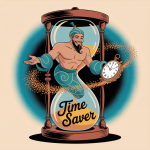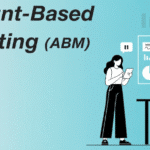The sales and marketing landscape has never stood still for long, but few shifts have been as transformative as the emergence of AI agents. These intelligent, task-focused systems are not hypothetical future tools – they’re here now, reshaping how growth teams operate day to day. For sales and marketing leaders, AI agents don’t just promise efficiency, they mark a structural change in how work gets done. Let’s contrast what life looked like before and after their arrival.
The reality before AI Agents
In the traditional sales and marketing setup, even well managed teams face chronic friction. Time, talent, and tools are never quite enough. Core tasks are often constrained by manual effort, inconsistent execution, and fragmented systems.
1. Prospecting has always been time consuming and inconsistent
Sales teams routinely spent hours building lists, researching leads, and preparing outreach. While CRMs and enrichment tools help, the effort remains largely manual. Reps often resort to generic messaging just to hit volume targets, reducing relevance and response rates.
Marketing teams, meanwhile, struggle to deliver highly targeted campaigns at scale. ABM efforts are limited to a handful of accounts due to the research overhead.
2. Content bottlenecks slow campaigns
Campaign execution often depends on content bottlenecks. Marketing leaders have to balance multiple stakeholders: internal teams needing assets, brand managers enforcing standards, and agencies juggling timelines.
Whether its a blog post, landing page, or outbound sequence, the cycle from brief to publish can take weeks – a major drag on agility.
3. Sales enablement is reactive
Sales teams frequently lack the content or insight they needed at critical moments. Proposals are cobbled together from outdated decks. Case studies are always hard to come by. Battlecards (if they exist) are static and rarely updated.
Cross-functional collaboration between Sales, Marketing, and Customer Success often breaks down due to unclear ownership and slow handovers.
4. Data is underused or overwhelming
Despite investments in CRM, marketing automation, and analytics platforms, data is either too fragmented to act on or too noisy to trust. Sales forecasting is more art than science. Campaigns are optimised on lagging indicators. Even when teams know what they wanted to track, pulling the right insights requires specialist skills or third-party support.
What changes after AI Agents?
AI agents introduce a new operating model – one where intelligent assistants can take on focused tasks with consistency, speed, and context-awareness. They don’t replace teams, they support them in delivering higher performance with less manual effort. Let’s revisit the same areas from earlier to explore how things shift.
1. Lead research and outreach becomes programmatic
With AI agents handling account and contact research, sales teams no longer start from scratch. Agents automatically surface high-fit companies based on firmographic and intent signals, enrich contact data, and recommend personalised outreach strategies. Outreach cadences can be adapted per persona, product fit, or buyer journey stage – making volume and relevance finally compatible. Instead of one rep sending 20 generic emails a day, a team supported by agents can deliver 100+ deeply personalised touchpoints without sacrificing quality.
2. Content creation accelerates without sacrificing quality
AI content agents help marketing teams generate high-quality assets across multiple formats – blog posts, social content, email sequences, sales one-pagers – all aligned to brand voice and buyer journey.This isn’t generic output. Agents trained on your tone, messaging, and value props can respond to real-time needs. Need a campaign-specific landing page by tomorrow? Done. Want to repurpose a whitepaper into 10 LinkedIn posts? Also done. Creative bottlenecks shift from “waiting for copy” to “deciding what to launch next.”
3. Sales enablement Is embedded, not separate
Instead of manually hunting for case studies or updating pitch decks, sales agents can auto-surface relevant proof points, value messaging, and proposal content tailored to the opportunity in play. More importantly, collaboration between functions is reinforced. For example, customer success agents can automatically flag referenceable customers and generate mini case summaries, closing the feedback loop that often fails in fast-growing companies.
Content and insight flow seamlessly across the funnel – not because someone remembered to do it, but because an agent is tasked with making it happen.
4. Data becomes insightful and actionable
AI agents transform raw data into decision-ready insight. Rather than logging into dashboards or exporting CSVs, leaders receive curated snapshots: top-performing channels, at-risk segments, upcoming churn risks, and forecast confidence. Sales reps receive deal-specific nudges. Marketers get early indicators of campaign fatigue. Customer success sees early warning signs of reduced engagement. The difference? It’s not just that the data is available, it’s that agents turn it into timely, contextual insight that fits into existing workflows.
A shift in how work happens
What makes AI agents powerful isn’t just speed or cost-efficiency, it’s the reduction in operational friction. Instead of relying on human effort to push things forward, agents orchestrate repetitive and insight-driven work automatically. This shift mirrors the way cloud computing transformed IT. Just as companies stopped managing physical servers and started consuming scalable infrastructure, growth teams will stop managing every micro-task and start relying on intelligent assistants to drive outcomes.
Things that don’t change
Not everything is different. Strategy still matters. Brand still matters. Empathy, creativity, personal relationships and trust still drive customer decisions. What changes is how fast and effectively teams can execute. The burden of “doing everything manually” is lifted. Sales and marketing leaders gain back the one resource they can never buy more of – time.
Getting started
If you’re early in your AI journey, you don’t need to reinvent everything overnight. The most successful teams start small:
• Deploy one agent for a clear, repetitive task (e.g., prospect research or content repurposing).
• Observe the lift.
• Build trust.
• Expand from there.
Think of agents not as a tool category, but as a new layer in your operating model – one that augments your team with always-on support, insight, and execution power.
Final thoughts
“Before and after” stories around AI agents are no longer speculative. They’re happening now across B2B teams who’ve realised that scale doesn’t have to mean burnout, and speed doesn’t have to compromise quality. AI agents are not here to replace sales and marketing leaders – they’re here to help them lead better. If your team is still spending hours on things that should take minutes, it might be time to look at what life looks like after agents.
Check our revgeni.ai to see how your team can benefit. Alternatively, feel free to book a meeting to discuss your needs at https://calendly.com/grant-revgeni






